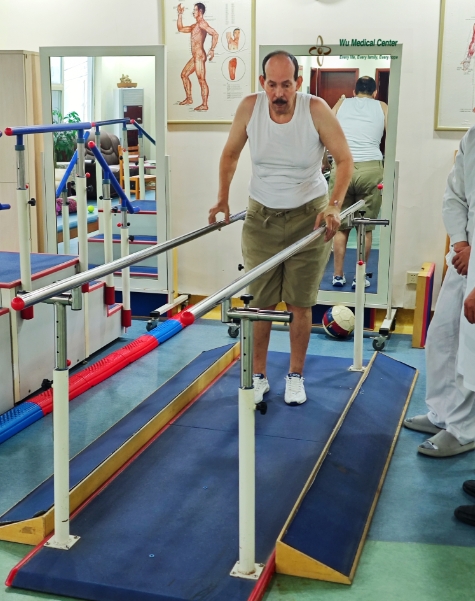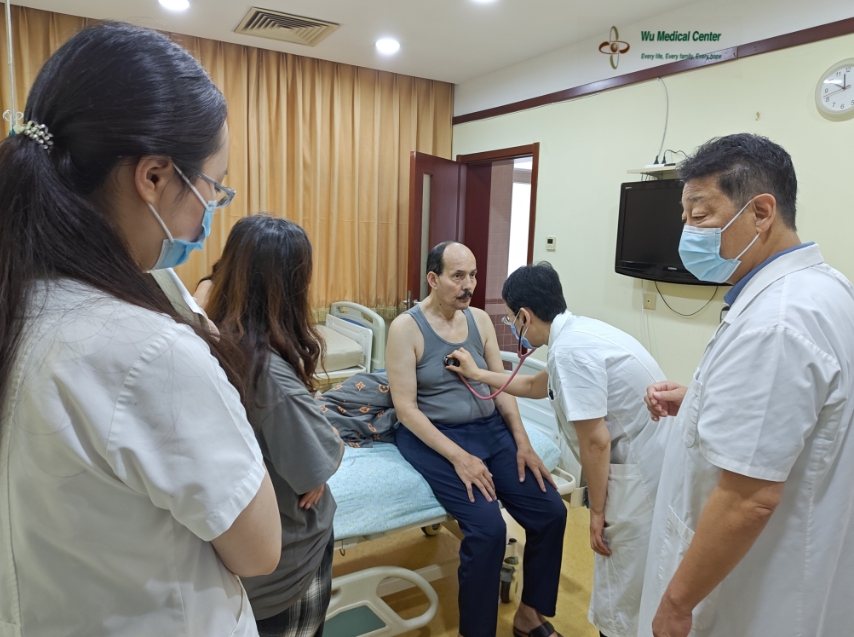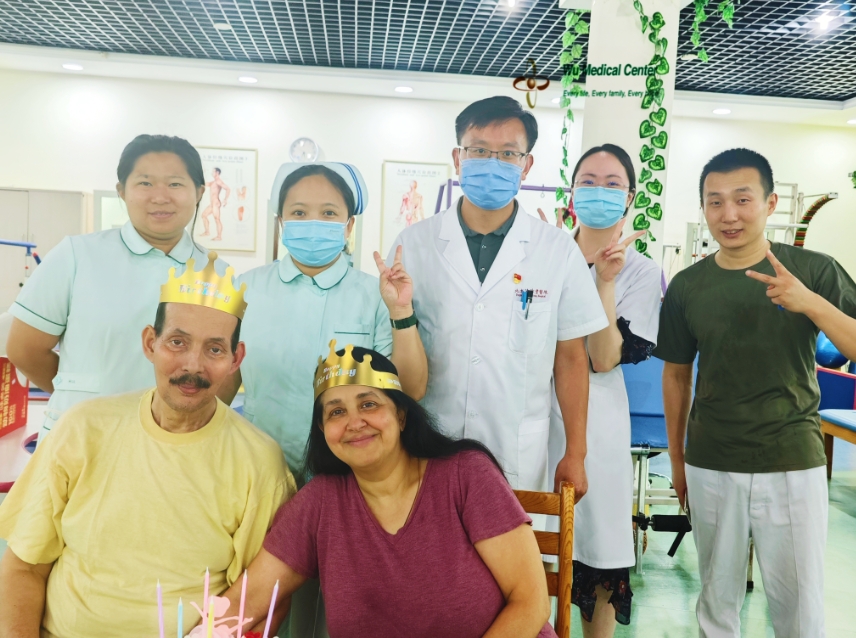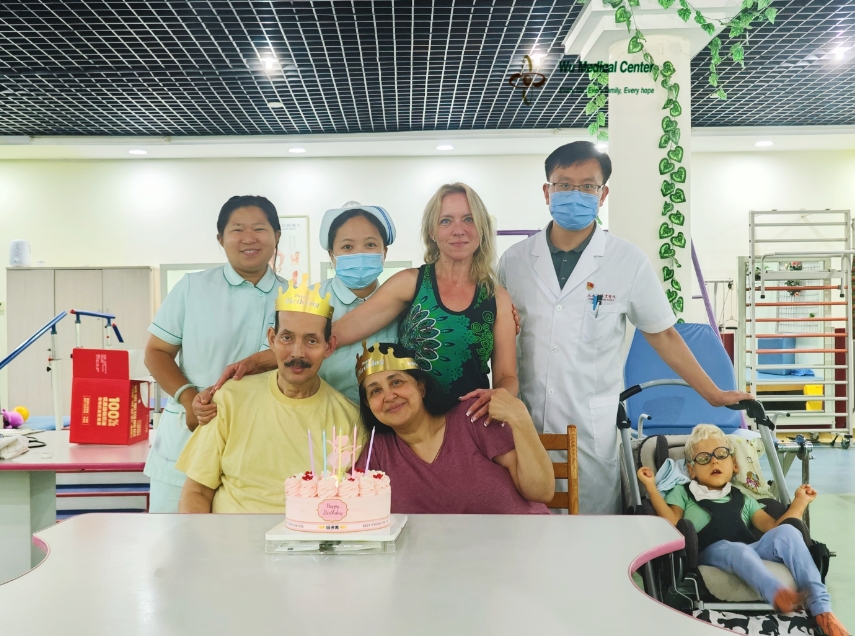Haitham Fuad Madanat-1. Hysterical muscular dystrophy 2. Post-liver transplant-(American)
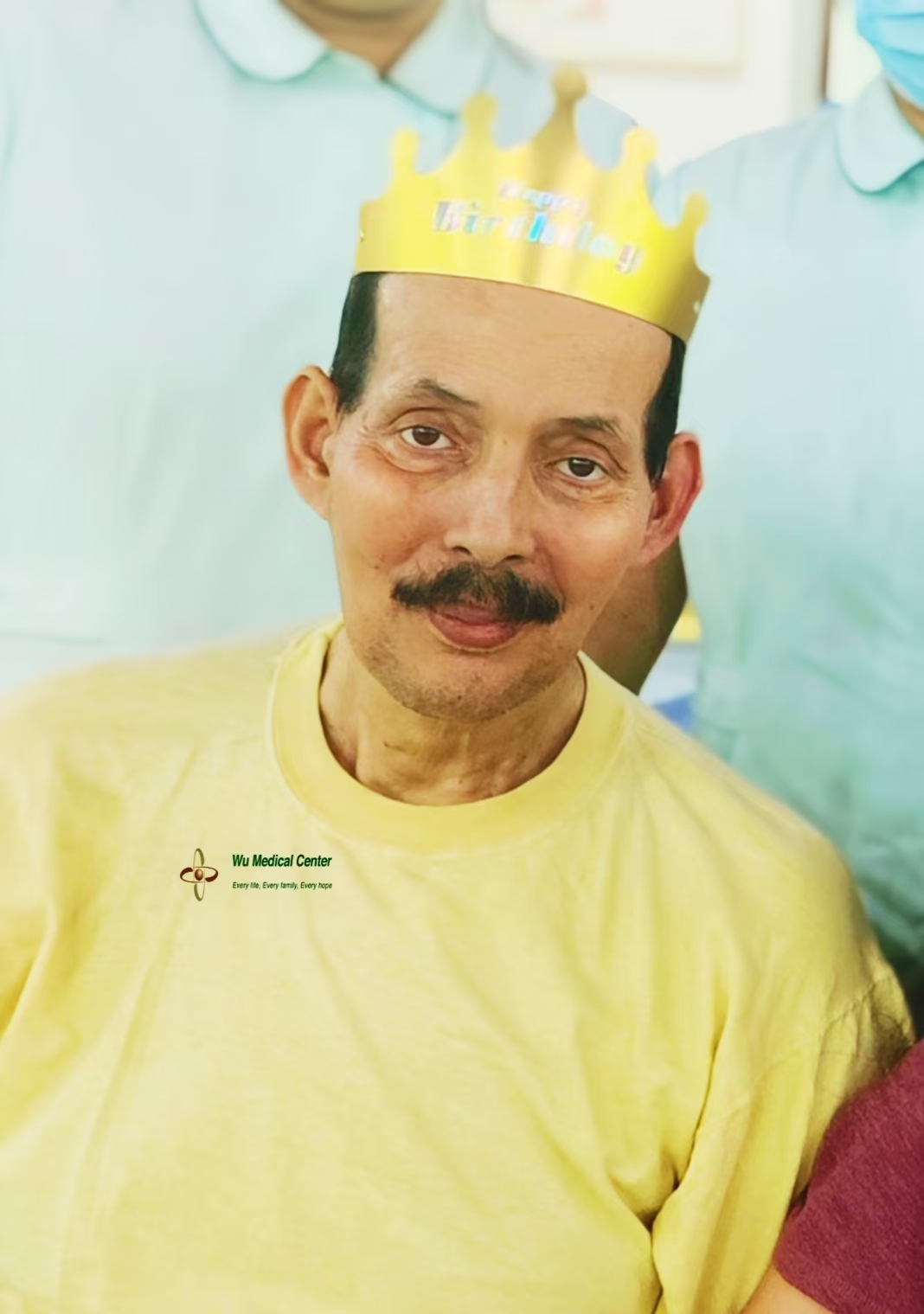 Patient Name: Haitham Fuad Madanat
Patient Name: Haitham Fuad Madanat
Gender: Male
Age: 57 years old
Nationality: American
Diagnosis: 1. Hysterical muscular dystrophy 2. Post-liver transplant
Admission Information:
The patient was admitted for "progressive swallowing difficulties and speech impairment, as well as compromised cardiopulmonary function for over 2 years," with a primary diagnosis of "hysterical muscular dystrophy." His main symptoms included progressive swallowing difficulties and speech impairment, muscle atrophy of various degrees throughout his body, decreased cardiopulmonary function, easy fatigue, shortness of breath, and pain in his bilateral knees and waist. Patient underwent liver transplantation at Stanford University Health Management Center one and a half years ago (December 10, 2022). After surgery, he regularly took immunosuppressive medications (Tacrolimus). His liver function was currently stable without any signs of decompensation. His local doctors have allowed him to travel outside the country. The patient currently took the following medications: Amitriptyline, Apixaban, Ursodeoxycholic Acid, Tacrolimus, Fludrocortisone, Trazodone, and Metoprolol Tartrate. His family history includes two brothers and his mother with Hysterical muscular dystrophy.
Admission Physical Examination:
Patient's temperature was 36.3℃, his heart rate was 61 beats/min, his blood pressure was 132/84 mmHg, his respiratory rate was 27 breaths/min, and his oxygen saturation was 89-90%. The patient had a gastric stoma tube, with intact skin and mucosa, no jaundice or bleeding points. His lungs had a low respiratory sound with scattered moist rales, his heartbeat was weak with a regular rhythm, and there were no significant murmurs in any valve auscultation area. His abdomen was soft without tenderness or rebound tenderness, and his liver and spleen were not palpable. There was no edema in the lower limbs.
Neurological Examination:
Patient appeard clear headed with decreased mental strength. His speech was unclear and confused. His memory, calculation, orientation, and comprehension were generally normal. Both pupils were equal in size and round, with a diameter of 2.0mm, and responded promptly to light. Both eyes showed normal movement without nystagmus. His nasolabial folds were symmetrical, with weak force of closing eyes. There was obvious atrophy of the masseter and temporal muscles with a sunken appearance. Both of his nostrils and lips showed equal depth, his tongue out was in the midline, and showing his teeth without any deviation. There was weak sucking and mastication muscle effort, weak lift of the soft palate, and inability to swallow food and water. He had weak neck and shoulder movement. His upper limb muscle strength and hand grip strength were grade 4, while his lower limb muscle strength was grade 3+. His muscle tone was generally normal in all four limbs. He could walk short distances, but his gait was wide-based and he had slow turning movements. He could maintain sitting independently, but had difficulty getting up from a supine position to a sitting position and from a sitting position to standing. He had difficulty with single-leg standing. His quadriceps reflex was decreased, and there was no evidence of pathological reflexes. His deep and surface sensation, his fine touch sensation were generally normal bilaterally, but his finger-to-nose test was slightly unstable and his coordination test was slightly clumsy, and his heel-knee-shin test was poorly completed. There was no evidence of meningeal irritation.
Treatment Process:
The patient was admitted with a clear diagnosis of "Hysterical muscular dystrophy". He was given CAST treatment to improve the body's environment and two types of stem cell therapy: mesenchymal stem cells + nerve stem cells, which aim to repair muscle fibers, nourish muscle tissue, improve blood circulation, regulate the immune system, and provide comprehensive rehabilitation training.
After Treatment:
The patient's condition has improved significantly. His speech is clearer and his voice has increased. His swallowing and chewing functions have significantly improved, and his masseter muscle volume has significantly increased. The sunken condition of his double cheeks have improved significantly, and he is gradually able to drink water (50-70 milliliters per day) and soft foods such as egg custard, bread, watermelon, grapes (peeled and deseeded). He can also swallow easily chewed foods. His cardiovascular and lung function has improved significantly. His respiratory rate is 20 breaths per minute at rest, and his blood oxygen saturation can reach 94%. His heart rate remains at 55-65 beats per minute at rest, and increases to 70-80 beats per minute after activity. His limb muscle strength has increased, and he has a basic muscle strength of grade 5. His lower back and core strength have improved, and he can quickly sit up on his own. He can hold single-leg standing for about 3-5 seconds. He is able to go out and engage in activities for 2 hours continuously. His walking distance has noticeably increased, as well as his energy, stamina, and physical endurance. The pain in his knees, waist and lower back has noticeably relieved.
